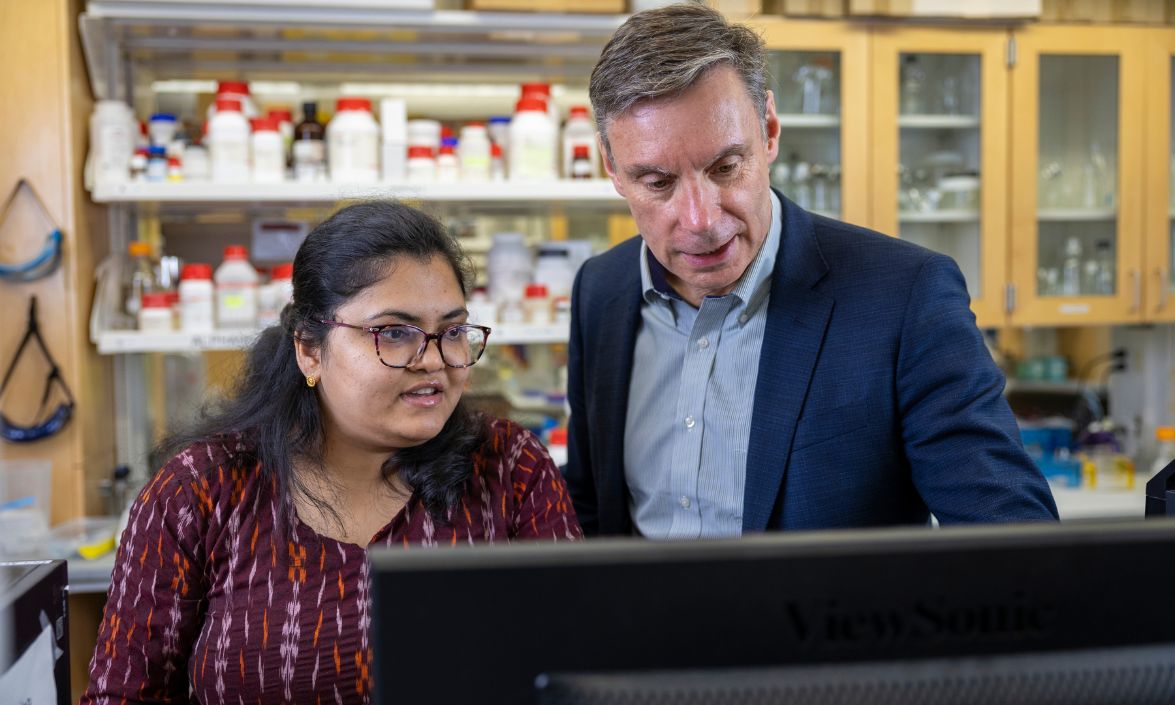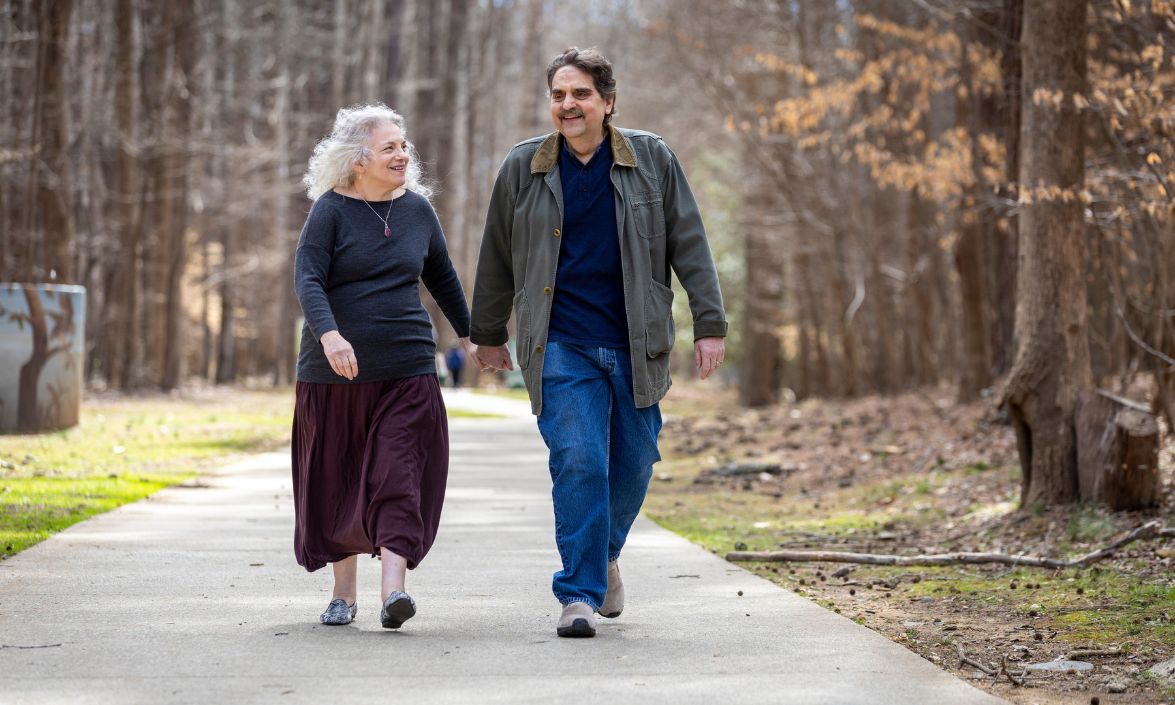Drug Trials Saved Lenny, and Will Help Thousands More
Exercise has been key, said his Duke oncologist, Dr. Daniel George. “Because of that, he’s had almost a decade of continuous exercise through his cancer care, which has really probably changed his quality of life as well as his ability to tolerate therapy,” said George, Eleanor Easley Distinguished Professor in the School of Medicine.
The trial that led to FDA approval
Around four years ago, Santoro’s cancer metastasized. His life expectancy at the time was two years. But he was able to participate in another clinical trial at Duke, while incorporating the exercise regimen created during the previous study into his daily routine.

This new clinical trial involved a drug called olaparib. The trial led to FDA approval of the drug in combination with another medication, abiraterone, for people with advanced prostate cancer.
Here’s where the good fortune came in: Santoro’s cancer was specific to the BRCA genetic mutation that some prostate cancer patients harbor – either in their tumor or inherited in their genes. BRCA is seen in patients with other cancers, such as ovarian; about 10% of prostate cancer patients have the BRCA mutation.
At the time Santoro was originally diagnosed, in 2011, it wasn’t routine to screen prostate cancer patients for BRCA, so there were no drugs approved.
Once in the clinical trial he happened to be randomly selected for the group receiving olaparib. He was later found to have the BRCA mutation, which explained his outstanding response, said George.
“I went from having metastatic cancer to being in remission in a year.”
Lenny Santoro
“Lenny was very lucky in that he was able, at the point in his disease, to be eligible for the clinical trial and to be randomized to the arm with olaparib,” said George. “Had he not, he might not even be alive today.”
The response to the drug has been dramatic. “He’s now four years into the trial with no evidence of disease recurrence,” said George. “He’s tolerating the drug well, probably because of his fitness and exercise regimen.”

“I went from having metastatic cancer to being in remission in a year,” said Santoro. “I went … to (being) a guy that’s going to be healthy and actually watch his grandchild grow up, which I honestly did not think I was ever going to have that happiness to see.”
Helping thousands of patients
The study has changed the life of many others. “While the study was phenomenal for Lenny and maybe another 400 patients,” said George, “it’s even more remarkable for the many thousands of patients now in regular practice that can access this drug at a time where it can make a critical, durable difference in their survival.”
The indication of the drug is specific for patients who have BRCA mutation, but George said drugs like olaparib are now being studied in clinical settings for patients who harbor those mutations, but also in patients who don’t. “Because this biology may be so synergistic with hormonal therapies we can see [improvement] even in patients who aren’t genetically predisposed.”


George says these types of trials are not possible without the infrastructure provided by Duke’s Cancer Institute, a part of the network of federally funded cancer centers created in 1971. That infrastructure includes everything from the personnel who are following the patients to the pharmacists distributing the drugs to the management of the data. “This is a critical time for us to recognize just how much the National Institutes for Health has played a role in where we are today with cancer therapies,” he said.
In cancer care, the tumor is a ticking time bomb, said George. “To see that time bomb get turned off in somebody like Lenny and see him live a normal life, to hear his stories about his grandkids. The normalcy that we’ve been able to bring back. That’s enough for me to keep going,” he said.